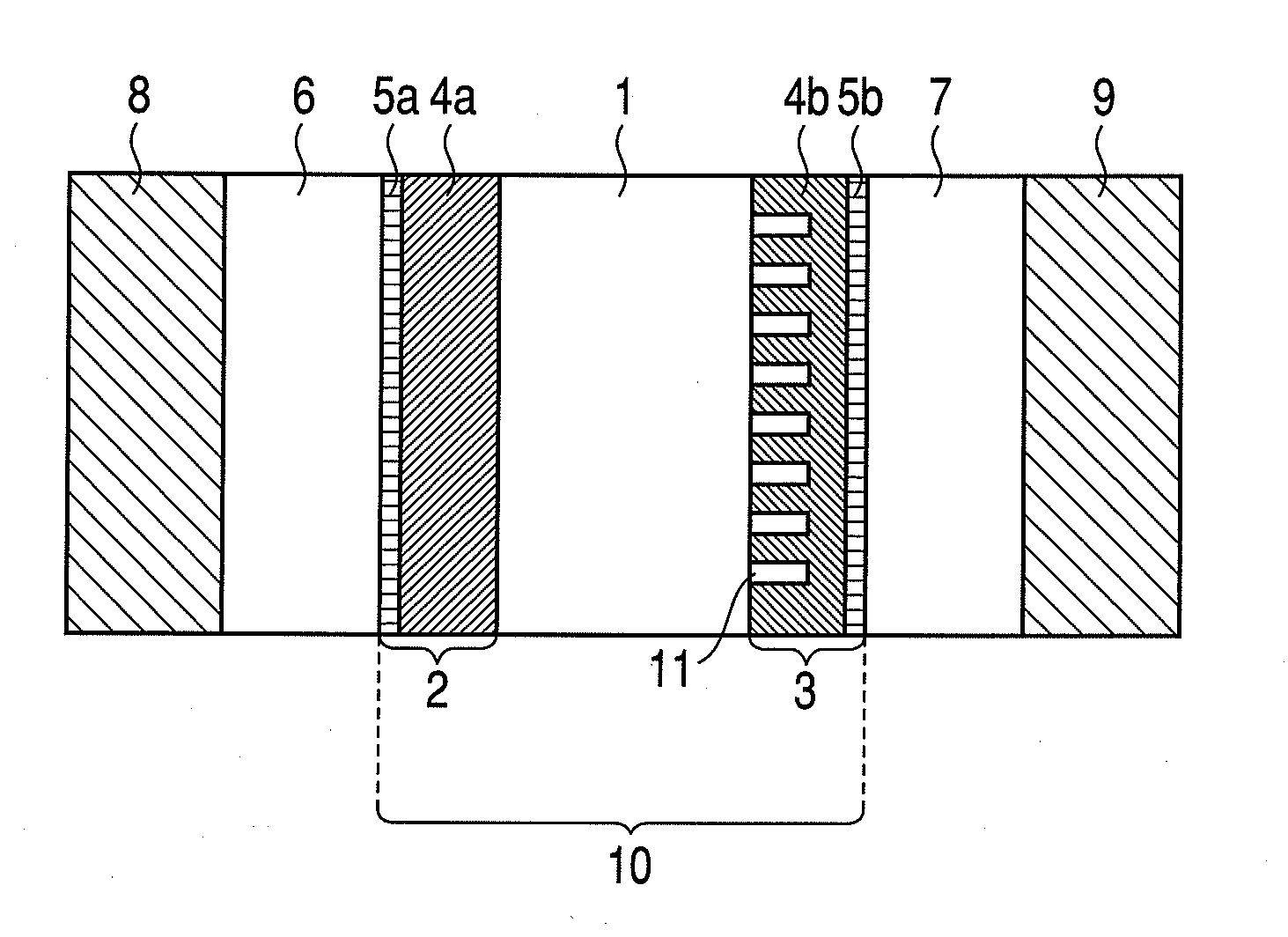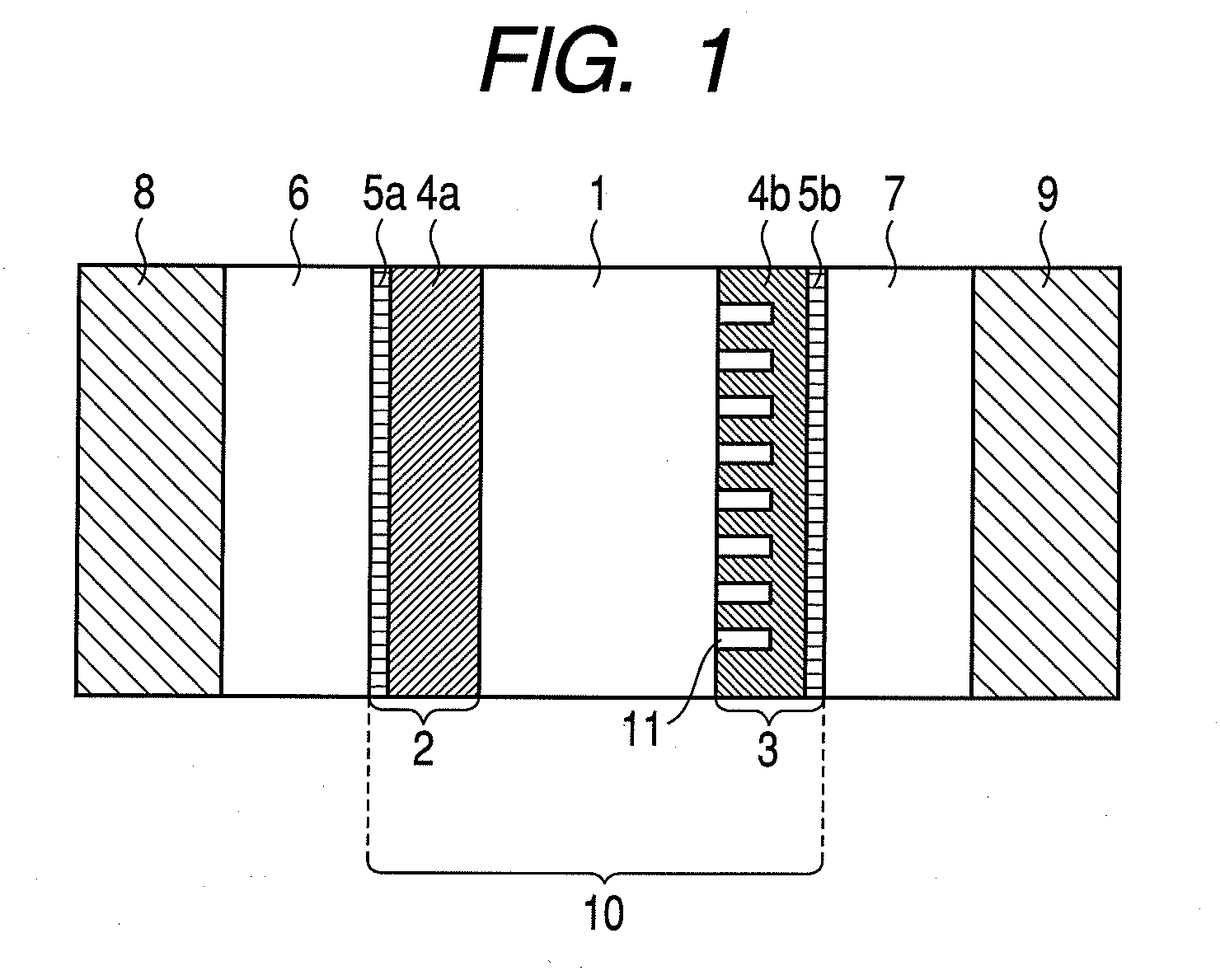Membrane electrode assembly for polymer electrolyte fuel cell and polymer electrolyte fuel cell
a fuel cell and membrane electrode technology, applied in the direction of cell components, electrochemical generators, sustainable buildings, etc., can solve the problems of slow discharge of water, so as to improve drainage performance
- Summary
- Abstract
- Description
- Claims
- Application Information
AI Technical Summary
Benefits of technology
Problems solved by technology
Method used
Image
Examples
example 1
[0093]In this example, there is manufactured a polymer electrolyte fuel cell having the structure illustrated in FIG. 1 of the embodiment.
[0094]Hereinafter, manufacturing steps of the polymer electrolyte fuel cell according to this example will be described in detail.
(Step 1)
[0095]A surface of a carbon fine particle layer of a carbon cloth (LT1200-W manufactured by E-TEK), was irradiated with YAG laser to machine the surface to have the grooved configuration. An output of the laser was 8 W, a beam size thereof was 10 μm, a pulse width thereof was 3 μm / pulse, and a scanning speed thereof was 15 mm / sec. In order to form the groove having a width of 15 μm, the laser was applied twice for each of the grooves. A second application was performed after shifting an application position by 8 μm in a groove width direction from that of the first application.
[0096]The above-mentioned operations were repeatedly performed to obtain a GDL having a structure in which grooves each having a width of...
example 2
[0112]In this example, there is manufactured a polymer electrolyte fuel cell having the structure illustrated in FIG. 1 of the embodiment.
[0113]Hereinafter, descriptions will be made only of manufacturing processes of the polymer electrolyte fuel cell according to this example, which are different from those of Example 1 in structure and manufacture.
(Step 1)
[0114]A carbon cloth (LT1400-W manufactured by E-TEK) was used as the gas diffusion layer. A surface of the carbon cloth, formed of the carbon fine particles, was irradiated with YAG laser to machine the surface to have the grooved configuration. An output of the laser was 8 W, a beam size thereof was 50 μm, a pulse width thereof was 3 μm / pulse, and a scanning speed thereof was 25 mm / sec. In order to form the groove having a width of 80 μm, the laser was applied twice for the each groove. The first application was performed to form a groove having a width of 50 μm. A second application was performed after shifting an application ...
PUM
| Property | Measurement | Unit |
|---|---|---|
| width | aaaaa | aaaaa |
| operating temperature | aaaaa | aaaaa |
| width | aaaaa | aaaaa |
Abstract
Description
Claims
Application Information
 Login to View More
Login to View More - R&D
- Intellectual Property
- Life Sciences
- Materials
- Tech Scout
- Unparalleled Data Quality
- Higher Quality Content
- 60% Fewer Hallucinations
Browse by: Latest US Patents, China's latest patents, Technical Efficacy Thesaurus, Application Domain, Technology Topic, Popular Technical Reports.
© 2025 PatSnap. All rights reserved.Legal|Privacy policy|Modern Slavery Act Transparency Statement|Sitemap|About US| Contact US: help@patsnap.com



